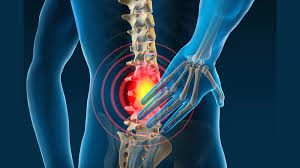The Rise of Spinal Issues Among Children in the Digital Era
- bykrish rathore
- 23 September, 2025

In today’s digital age, technology has become deeply woven into children’s education, entertainment, and communication. While smartphones, tablets, and laptops offer tremendous benefits, they also come with unintended health consequences. One of the most concerning trends observed by pediatricians and spine specialists is the alarming rise of spinal issues among children growing up in the digital era.
Why spinal issues are increasing in children
The primary reason is poor posture linked to prolonged screen time. Children often sit hunched over devices with rounded shoulders, bent necks, and unsupported backs. Over time, this posture strains the developing spine, leading to muscular imbalances, stiffness, and early degeneration. Unlike previous generations that spent more time outdoors, today’s children have reduced opportunities for physical activity, which further weakens spinal support muscles.
Common spinal problems observed
Doctors have reported increasing cases of:
Tech neck – caused by constant downward head tilt while using smartphones.
Early-onset back pain – previously uncommon in children but now frequent.
Poor spinal alignment – including slouching and uneven shoulders.
Scoliosis and postural kyphosis – conditions that can worsen if not treated early.
Lifestyle factors making it worse
Digital learning has accelerated screen dependency. Many schools now rely heavily on laptops or tablets, which means children spend long hours sitting in front of screens without proper ergonomic setups. Heavy schoolbags, lack of exercise, and reduced outdoor play compound the risks. Additionally, prolonged sitting reduces blood circulation, which negatively affects spinal flexibility and joint health.
Long-term risks
If ignored, spinal issues in childhood can carry into adulthood, leading to chronic back pain, disc problems, and posture-related complications. A weak spine also affects breathing, physical endurance, and overall confidence. This makes early intervention crucial.
What parents and schools can do
Encourage movement – Ensure kids take breaks every 30–40 minutes to stretch and walk.
Ergonomic seating – Invest in child-friendly chairs and desks that support natural spinal alignment.
Limit screen time – Set clear boundaries for recreational screen use.
Promote outdoor activities – Sports, yoga, swimming, and cycling help strengthen the spine.
Monitor posture – Teach children to sit upright with screens at eye level.
Regular check-ups – Consult pediatricians or physiotherapists if children complain of persistent back or neck pain.
Conclusion
The rise of spinal issues among children in the digital era is a pressing public health concern. As technology continues to shape childhood, it is important to balance its advantages with awareness of its physical consequences. By fostering better habits, ensuring ergonomic setups, and encouraging active lifestyles, parents and educators can help safeguard children’s spinal health. Protecting the spine today is an investment in the overall well-being and quality of life of future generations.

Note: Content and images are for informational use only. For any concerns, contact us at info@rajasthaninews.com.
40 के बाद शर्ट से बा...
Related Post
Hot Categories
Recent News
Daily Newsletter
Get all the top stories from Blogs to keep track.











